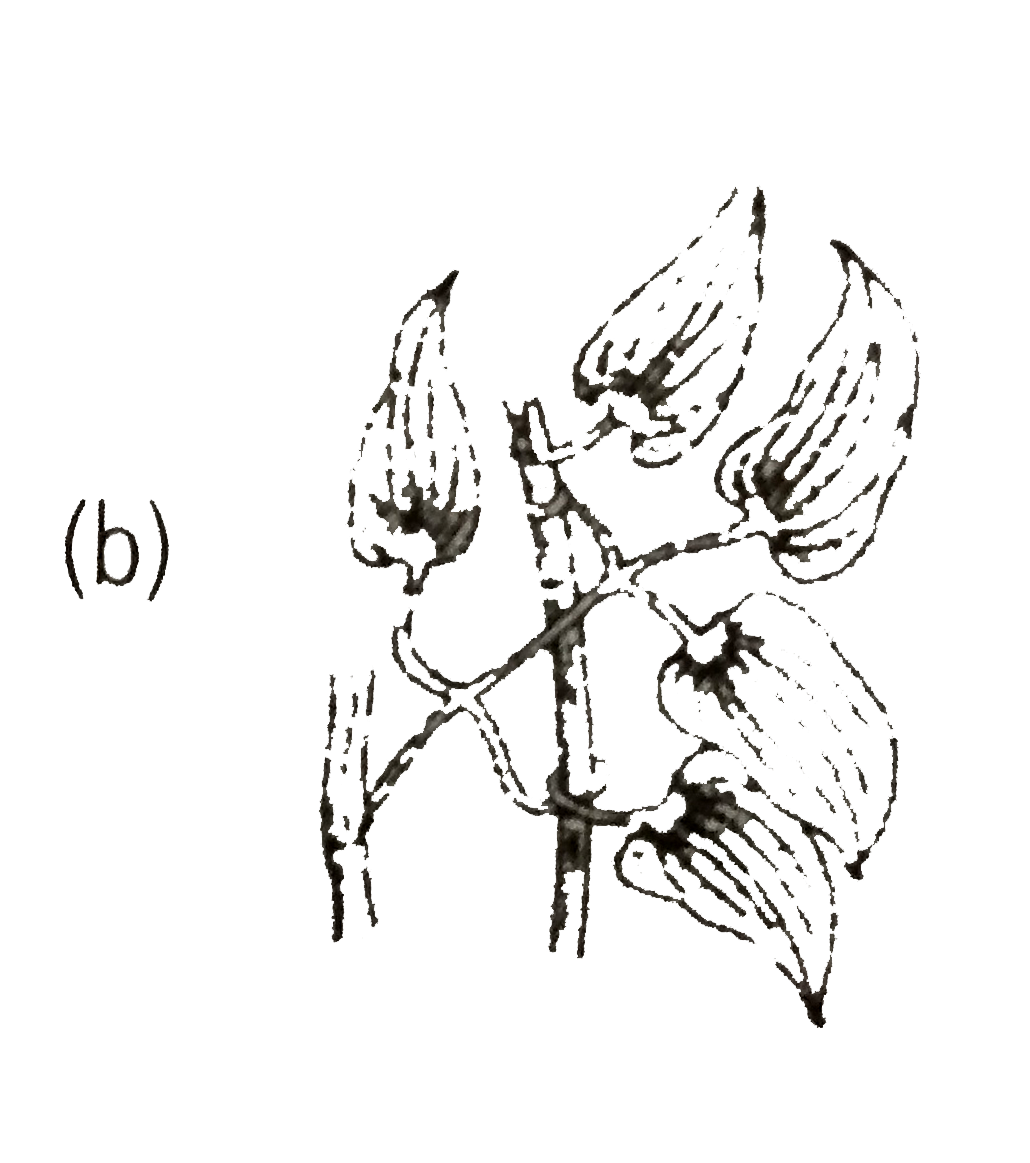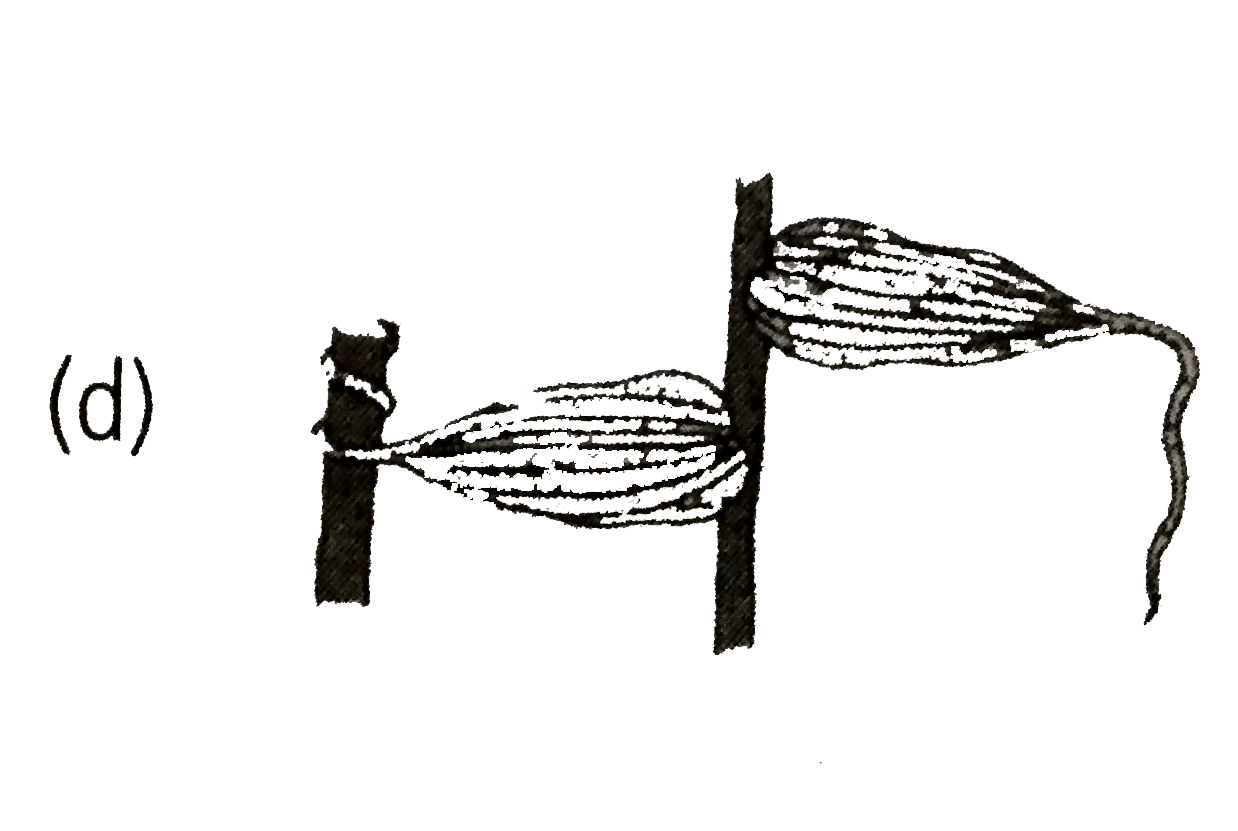What is a leaf tendril? How does it help the plant?
Step-by-Step Solution:
1. Definition of Leaf Tendril:
- A leaf tendril is a modified leaf that has evolved into a thread-like structure. It is designed to perform specific functions that aid the plant's survival and growth.
2. Functions of Leaf Tendrils:
- Support for Climbing: One of the primary functions of leaf tendrils is to provide support to the plant, allowing it to climb up structures such as trellises, trees, or other plants. This climbing ability helps the plant to reach sunlight, which is essential for photosynthesis.
- Reducing Transpiration Loss: Leaf tendrils can also help in minimizing water loss through transpiration. By climbing and attaching to other structures, the plant can position itself in a way that reduces exposure to wind and sunlight, thus conserving water.
- Attachment for Parasitic Plants: In some cases, leaf tendrils can form attachment bodies that allow parasitic plants to invade other plants. This adaptation helps them secure space and access nutrients from their host plants.
3. Conclusion:
- In summary, leaf tendrils are specialized structures that not only support climbing but also help in reducing water loss and can assist parasitic plants in obtaining resources.
- A leaf tendril is a modified leaf that has evolved into a thread-like structure. It is designed to perform specific functions that aid the plant's survival and growth.
- Support for Climbing: One of the primary functions of leaf tendrils is to provide support to the plant, allowing it to climb up structures such as trellises, trees, or other plants. This climbing ability helps the plant to reach sunlight, which is essential for photosynthesis.
- Reducing Transpiration Loss: Leaf tendrils can also help in minimizing water loss through transpiration. By climbing and attaching to other structures, the plant can position itself in a way that reduces exposure to wind and sunlight, thus conserving water.
- Attachment for Parasitic Plants: In some cases, leaf tendrils can form attachment bodies that allow parasitic plants to invade other plants. This adaptation helps them secure space and access nutrients from their host plants.
- In summary, leaf tendrils are specialized structures that not only support climbing but also help in reducing water loss and can assist parasitic plants in obtaining resources.
Topper's Solved these Questions
- THE LEAF BOOK - ICSECHAPTER - THE LEAF EXERCISE - Exercises
1 Videos
- THE LEAF BOOK - ICSECHAPTER - THE LEAF EXERCISE - Check your progress (true or false.)
5 Videos
- THE LEAF BOOK - ICSECHAPTER - THE LEAF EXERCISE - Exercises (Name the type of leaves present in the following plants.)
8 Videos
- THE FLOWER BOOK - ICSECHAPTER - THE FLOWER EXERCISE - REVIEW QUESTIONS (LONG ANSWER QUESTIONS)
10 Videos
Similar Questions
Knowledge Check
Different parts of a leaf are modified into tendrils which helps the plant in climbing up. Identify the type of tendril that is seen in Clematis
A B
B C
C D
D
Leaf tendril is not seen in
View SolutionMycorrhiza does not help the host plant in
View SolutionNepenthes (commonly called as pitcher plant), an insectivorous plant usually grows in marsh lands. Which part of the plant is modified into a 'pitcher'? How does this modification help the plant for food even though it can photosynthesize like any other green plant?
View SolutionWhat is photochemical smog composed of ? How does this affect the plants?
View SolutionAdventitious buds at the leaf notches help to propagate the plant
View SolutionWhat is haploidy? How are haploid plants raised? How are they helpful in plant breeding?
View SolutionWhat is senescence? How does it occur in various plants?
View Solution
